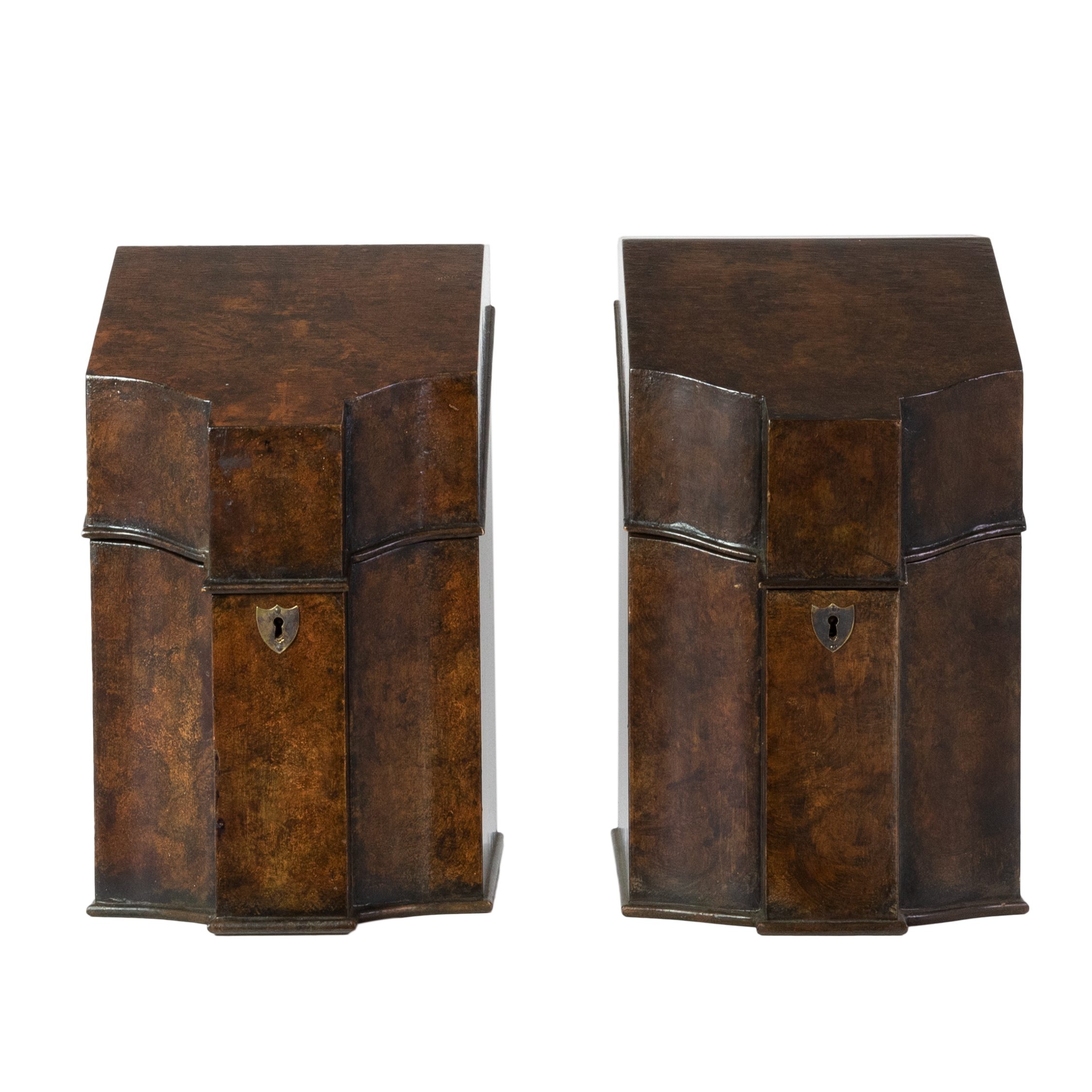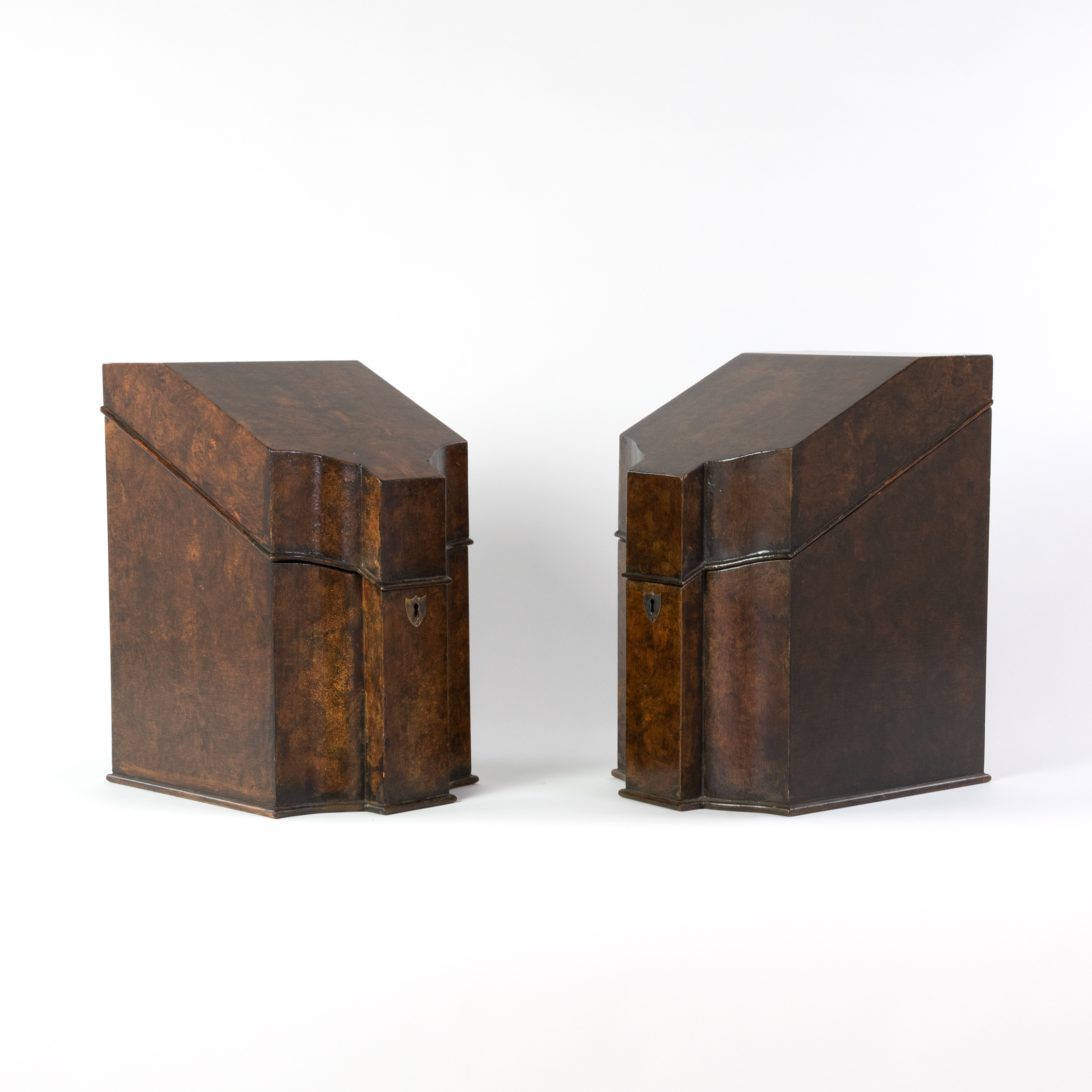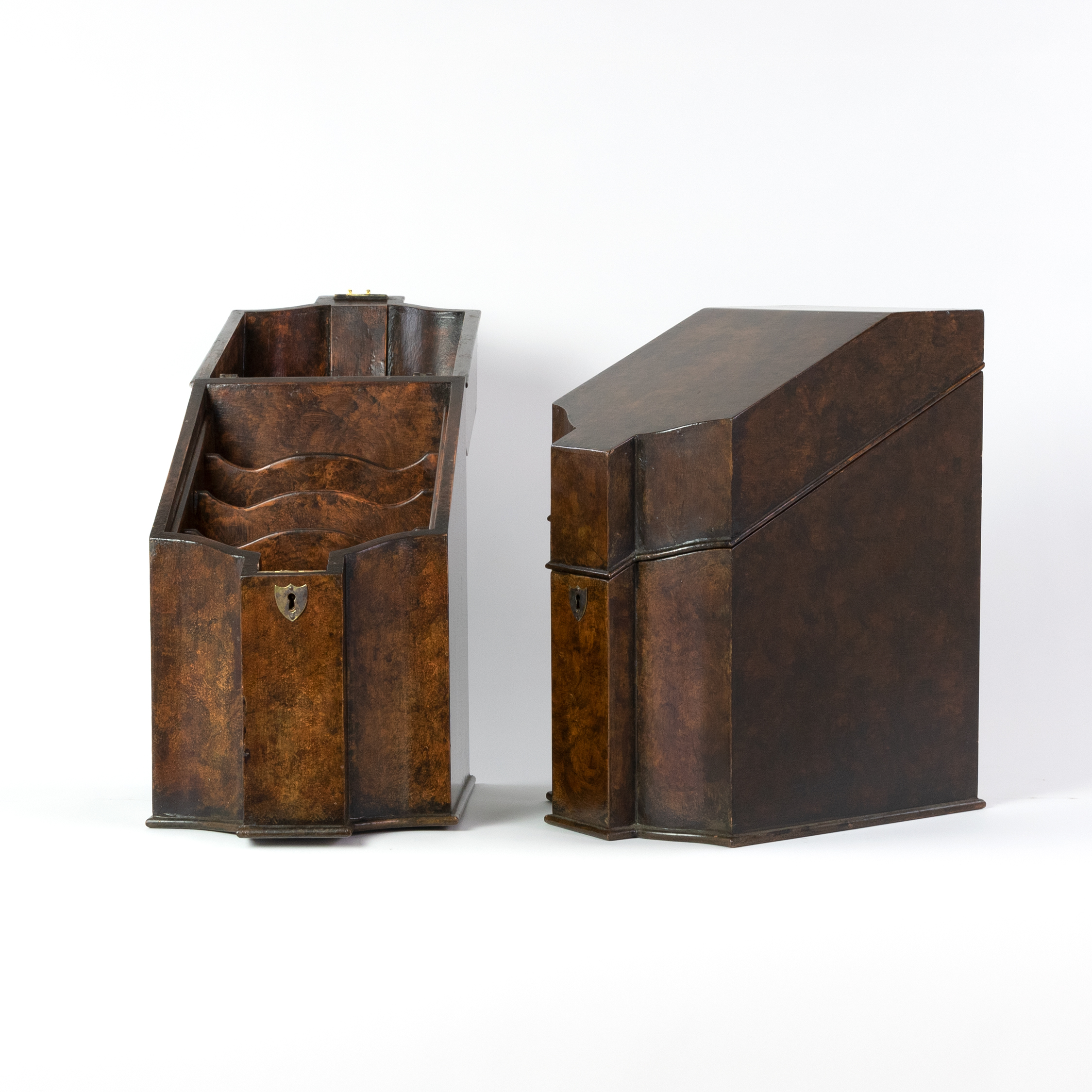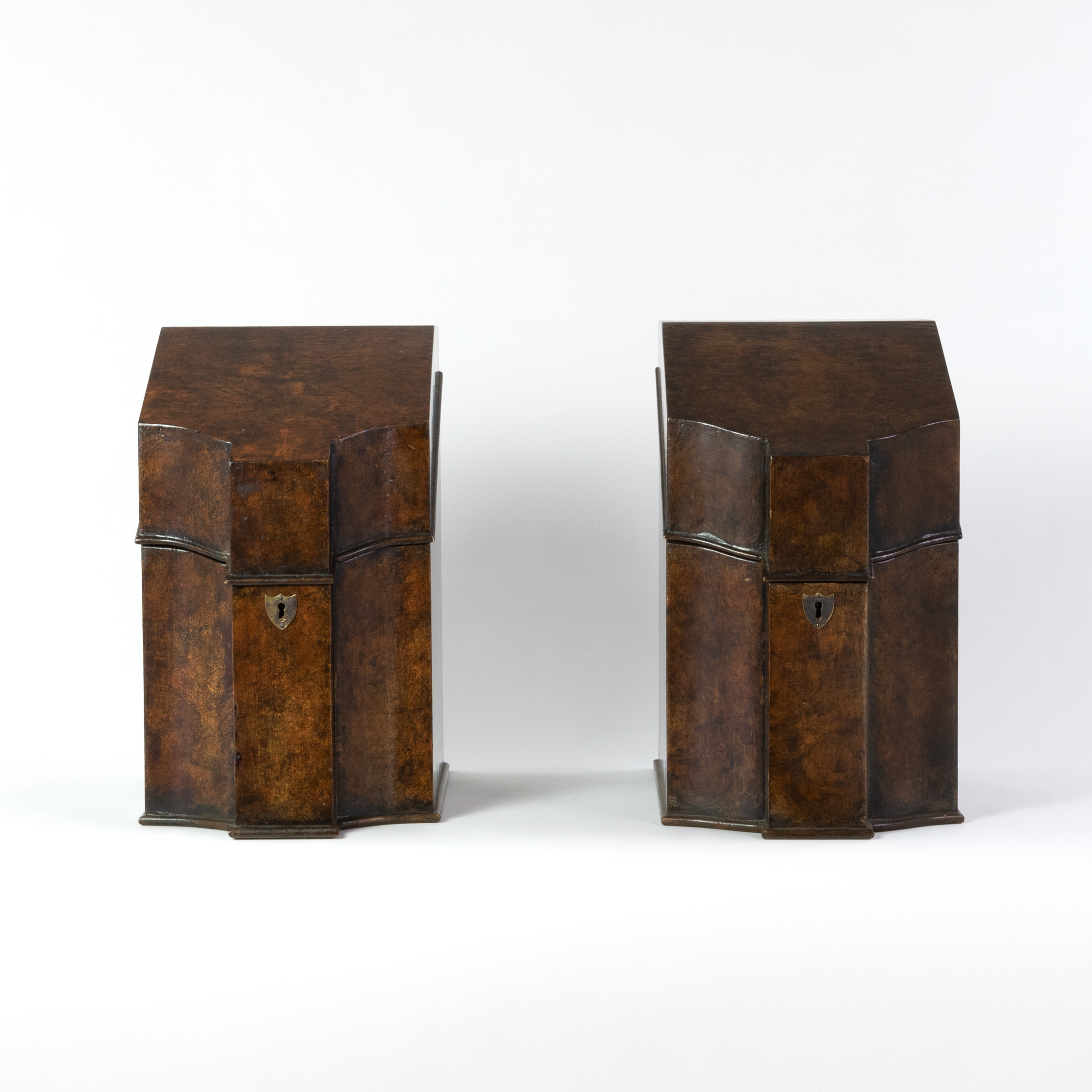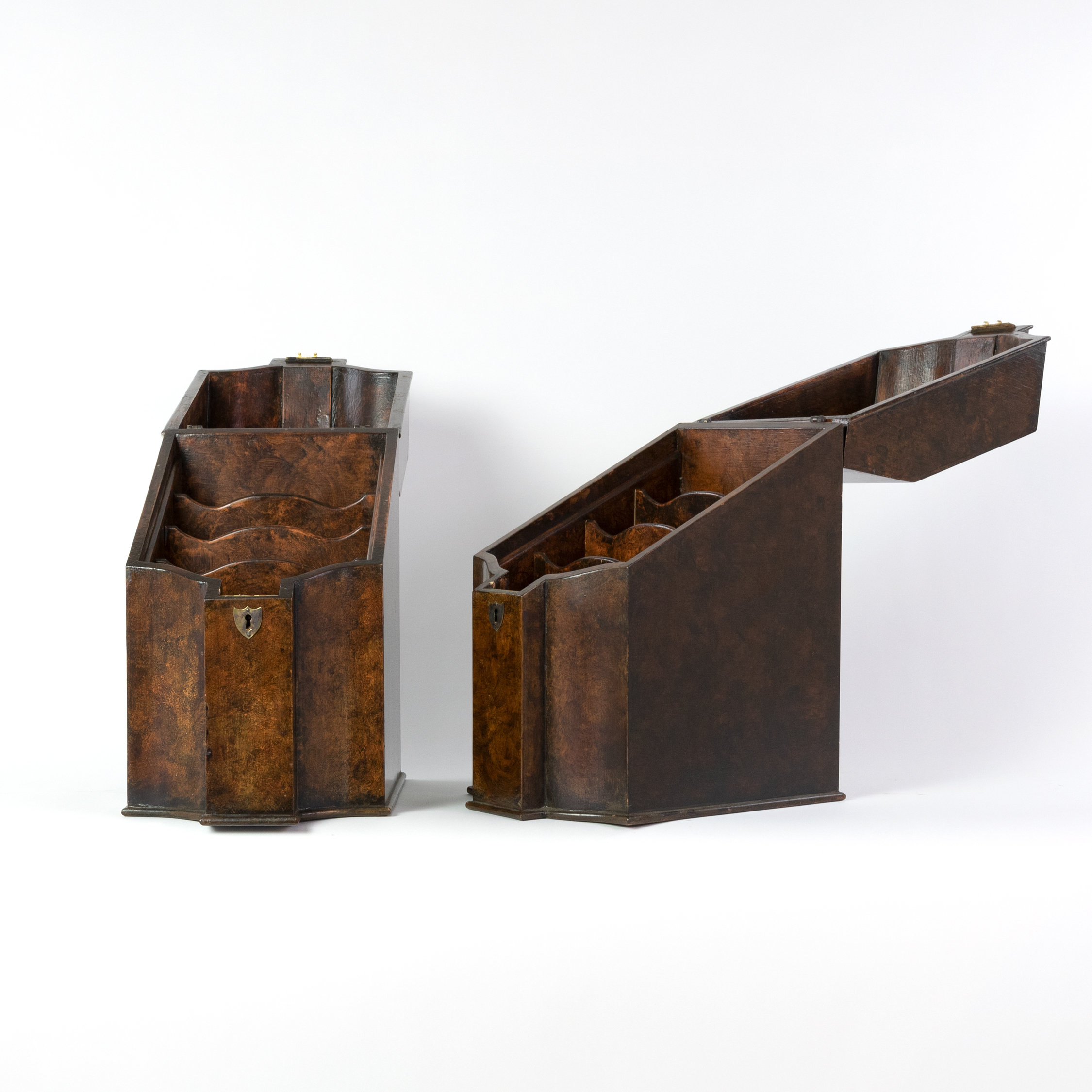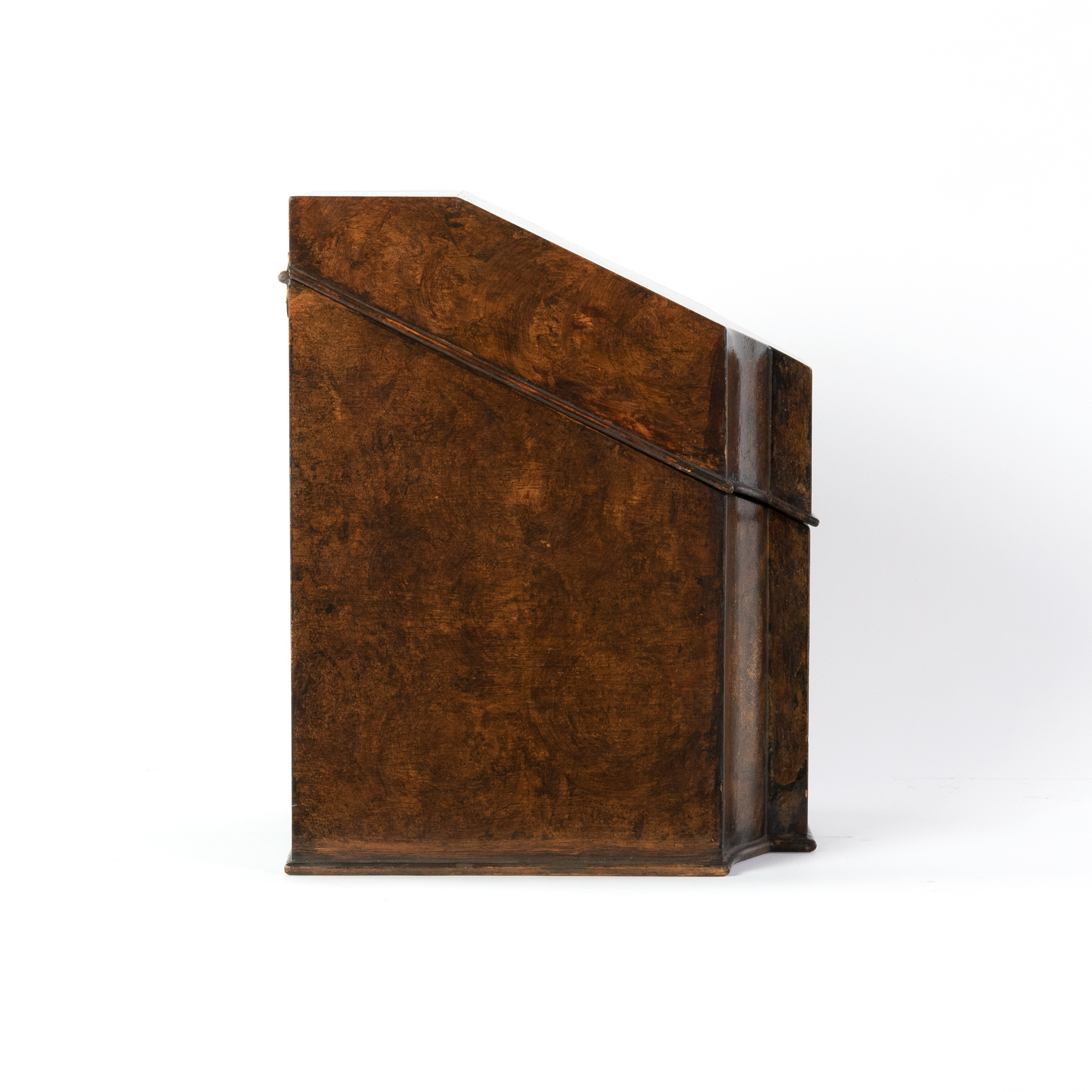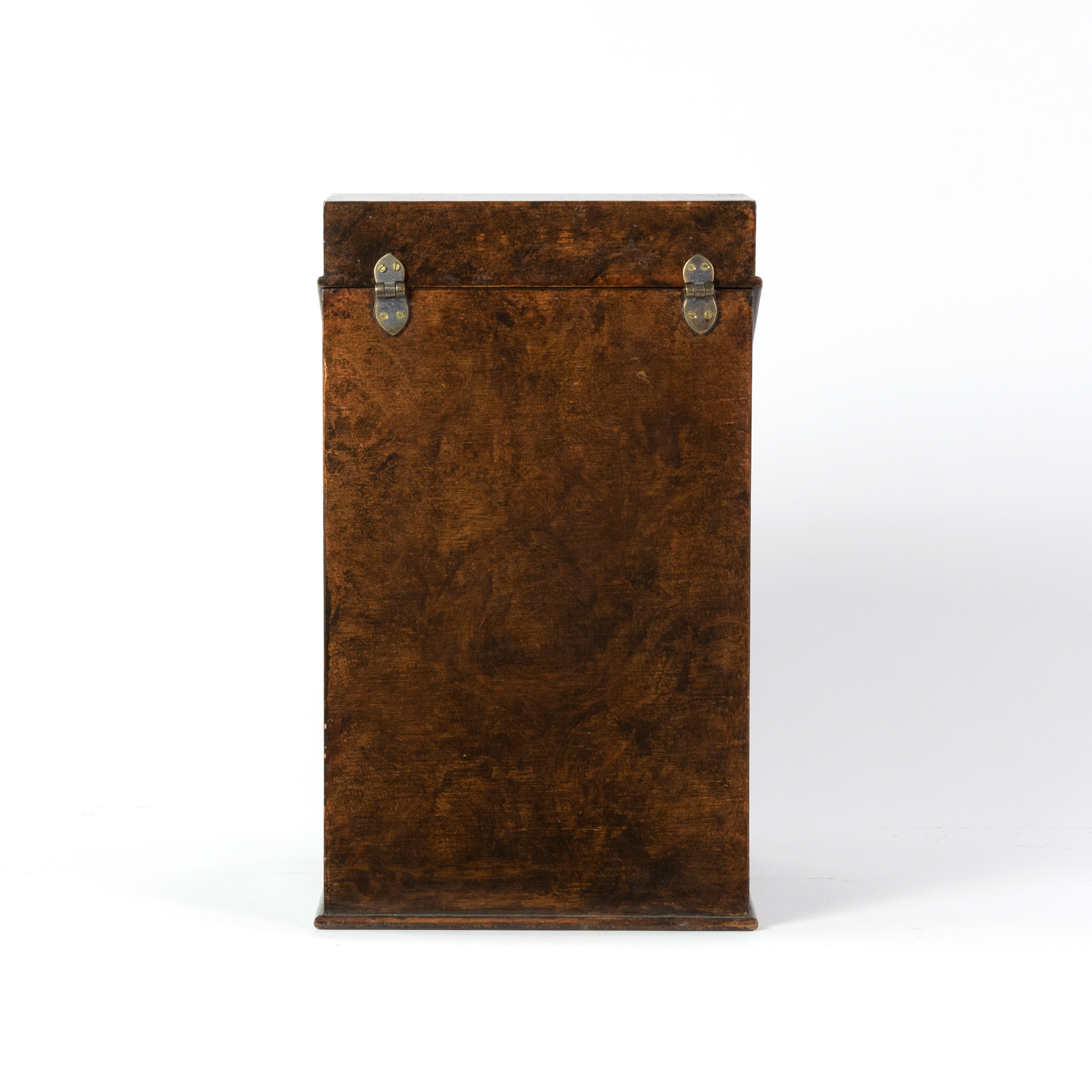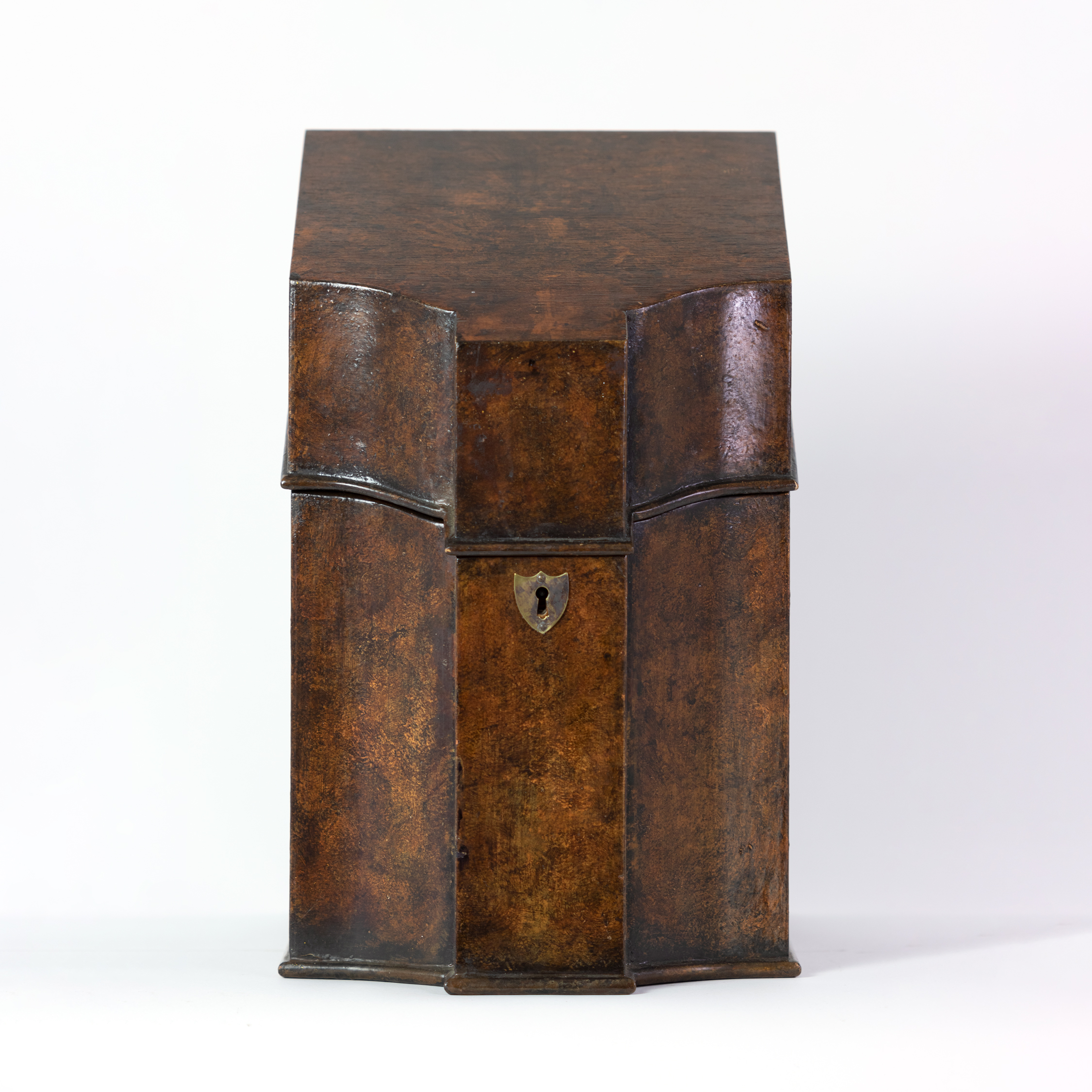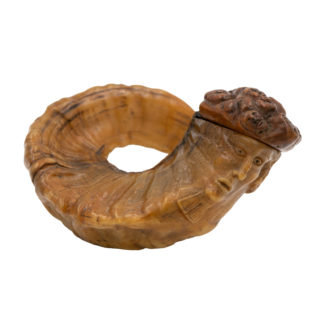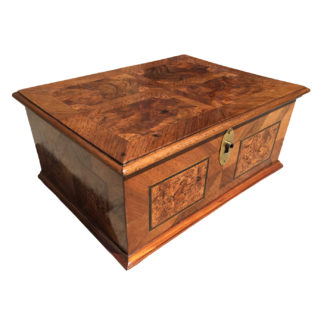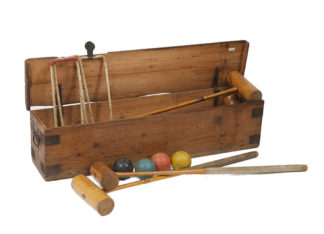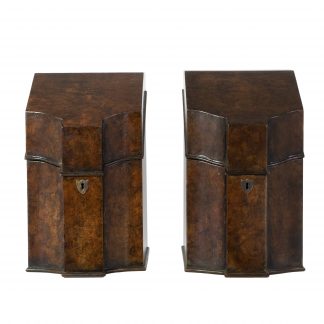Description
A pair of early 19th century finely figured, faux burl painted knife boxes repurposed as a pair of partitioned, compartmentalized letter boxes with plain steel shield form escutcheons, Late 18th Century Stationery Box. English, circa 1820.
height: 15 in. 38 cm., width: 9 in. 23 cm., depth: 12 in. 30.5 cm.
Sold as a pair. 1
Further readings and sources:
- Knife Boxes *
Knife boxes were first made during the second part of the seventeenth century, but they were not really seen as necessary household accessories until well into the eighteenth century. When invited to dinner, guests were expected to bring their own cutlery, so sets of knives and forks were not deemed to be necessary dining room items. The first record of a knife case dates from 1649. It is a drawing in Randle Holme’s Academy of Armory, showing a standing box for holding knives and forks. However it was not until Charles II presented the Duchess of Portsmouth with twelve golden knives and forks that sets became fashionable and began to be made in any numbers. The sets were kept in the dining room and knife cases evolved in order to provide an elegant storage solution.
During the last decades of the eighteenth century, the shapes and decoration of such boxes varied a great deal, allowing for personal preferences. Although Sheraton in his 1791 Drawing Book claims that knife cases were not “made in regular cabinet shops” and recommends the specialist John Lane, this claim cannot be entirely true. What Sheraton’s observation tells us is that, by the time he was writing knife cases were so popular that whole workshops could be kept busy just making such boxes. Certain workshops, especially in London, did offer this specialization. However this is not to say that the work of other cabinetmakers in this field was inferior.
The fashion for pairs of knife boxes was promoted after the Adam inspired sideboard was firmly established in the dining room. The neoclassical demand for symmetry favored a knife box at each end of the elongated sideboard, with a wine cellaret placed in the middle, under the board. The Georgian sideboard stood on elegant legs like a long, narrow wall table. The space under it was not filled with drawers and cupboards. As guest lists grew, three and even four matching knife cases were commissioned. Sometimes two were smaller, allowing for dessert cutlery to be stored along-side the larger main meal pieces.
As social gatherings became larger with extended families and house parties, knife cases fell out of favor. They were not large enough to hold enough pieces of cutlery and their form could not be modified further. The decor of the Victorian dining room had also changed and the cutlery was not necessarily kept on the sideboard, which had become heavier. Knife boxes were really only made in any significant numbers for about forty years, from 1770 to 1810.
* Excerpted from Antique Boxes, Tea Caddies, & Society 1700-1880, (p. 258 ) Antigone Clarke & Joseph O’Kelly ©2003
↩

